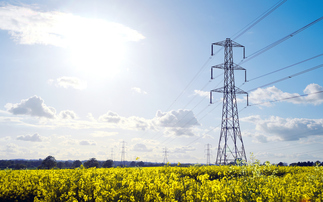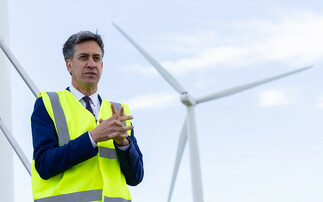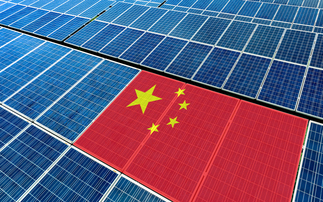Air pollution issues in China and India's shift to renewables are putting the world's coal market on a downward trend
Technology innovation across energy efficiency, renewable energy and energy storage are driving a transformation of the world's electricity market that is only expected to accelerate as the second half of this decade evolves. The success of Paris has been in the formulation of Individual Nationally Determined Contributions. Pledges by the three world leaders - China, America and India - will only accelerate the trend to decarbonise the world's electricity markets.
Paris has served to highlight the inevitability of global policy action. The inevitable conclusion is that the global market for coal will continue to fade, and that the trends that have emerged over 2014 and 2015 will continue.
The Institute of Energy Economics and Financial Analysis (IEEFA) has written about 2013 being the year of peak coal consumption in China. The decline in 2014 of 2.6 per cent has accelerated during 2015, with coal consumption down 5-6 per cent year-to-date. China produces and consumes half the world's coal. As such, the global coal industry is reeling from this unexpected decline of coal in China.
Any suggestion that China will reverse this direction ignores the significant policy momentum in China for continued electricity sector transformation. Only last week it was reported that China's cabinet aims to cut pollution from coal-fired power plants by 60 per cent by 2020 through upgrades to coal fired power plants. This follows Beijing being hit with a number of days of Red Alerts for extreme, prolonged air pollution in the last two weeks.
Likewise, China has invested hundreds of billions of dollars building out high voltage grid transmission capacity that will progressively come on stream over 2016-2018. This will progressively enable to cost effective use of renewable energy capacity already operational in west China that in 2015 has seen curtailments reaching an average of 15 per cent. This will further erode coal-fired power generation in the south-east of China. And in 2017 China will commence its national emissions trading scheme, internalizing some of the costs of coal-fired power.
China continues to develop 20-25 gigawatts (GW) of new wind power each year, 20GW of hydro electricity capacity and potentially 5GW of new nuclear. China in 2015 is likely to set (yet again) a world record for solar installations, with 15-17GW to be commissioned.
The second largest producer and consumer of coal globally is America. There, the news is even grimmer for coal. The weekly rail shipments of coal in the December 2015 quarter to-date are down 32 per cent, double the year-to-date decline of 17 per cent. This accelerating rate of decline saw CSX Corporation (a Tier 1 US rail carrier) downgrade its 2015 earnings guidance specifically because of coal. With natural gas prices close to record lows, and record high wind and solar installation activity in the US in 2015, the headwinds to coal are only getting stronger.
The third largest producer and consumer of coal globally is India. At last, a market with some positive news for coal producers. Well, specifically only one - Coal India Limited. With April to November 2015 coal dispatches up 9.8 per cent year-on-year, India's coal self-sufficiency is rapidly increasing. However, at the same time, Energy Minister Piyush Goyal is pursuing a rapid diversification of the Indian electricity generation sector. Record activity in the renewables sector has followed the announcement of a target for 175GW of renewables by 2021, including 100GW of solar. 2015 has seen 10GW of solar tenders completed, and another 6GW where the tender process is underway.
Relative to the 1GW pa of solar installations achieved in the prior two years, this represents a dramatic acceleration of investment in new solar, with annual installation growth of 100-200 per cent likely in 2016. In the last two weeks of November 2015, the Indian states of Jharkhand and Karnataka each announced tenders for 1.2GW of new solar. This follows the award of a US$500m, 500MW solar tender to SunEdison in Andhra Pradesh earlier in November at a power purchase agreement tariff of only Rs4.63/kWh (US7.1c). This record low tariff is contractually set to be flat in nominal terms for 25 years, an effective real decline of possibly 5 percent annually. India is rapidly embracing the long term merits of deflationary renewable energy.
Minister Goyal has also set a target to reduce grid transmission losses from 25 percent to 15 percent by 2019. Should India succeed in doubling its domestic coal production plus delivering a five-fold increase in renewable capacity and driving down grid transmission losses to 15 per cent, the outlook for thermal coal imports into India is bleak.
IEEFA doesn't seek to downplay the importance of other nations collectively working on climate change action. But with China, America and India collectively producing and consuming close to 70 per cent of the world's coal in 2014, transformation is underpinned by these three world leaders.
Global financial institutions - banks, insurers and investors - are all increasingly taking on board the consequences of financial risks best highlighted by the Bank of England governor Mark Carney in September 2015. The moves by the Norwegian Sovereign Wealth Fund, Aviva, Axa, Calpers and Allianz show the world's largest financial institutions are increasingly accepting the risks of stranded assets and moving to protect their shareholders and business models. This will further accelerate the adoption of technology innovation and move capital away from high carbon investments.
The common electricity sector themes across China, America and India are technology innovation, energy security through system diversification, a progress policy framework and energy sector deflation. Success in Paris will only accelerate the inevitable transformation of the world's electricity markets, further undermining the role of coal progressively in the coming decade.
Tim Buckley is director of Energy Finance Studies, Australasia at the Institute for Energy Economics and Financial Analysis (IEEFA).
This article is part of BusinessGreen's Road to Paris hub, hosted in association with PwC.









